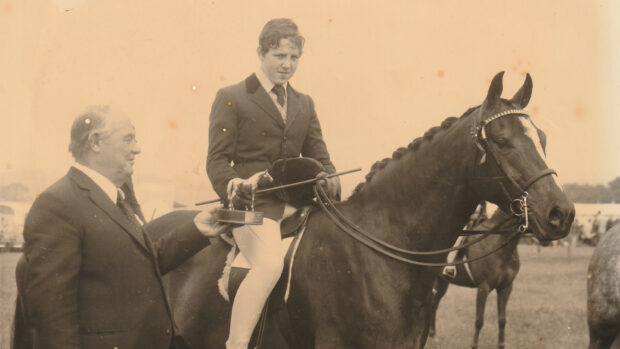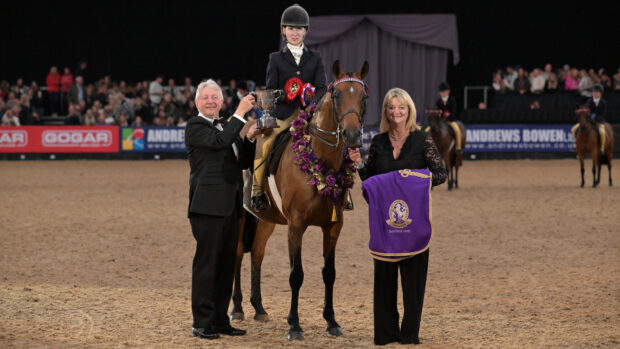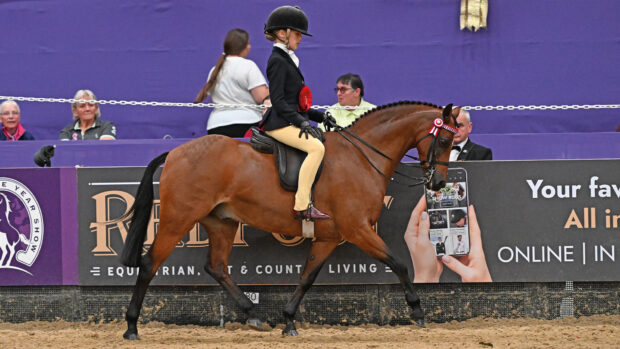I watched Burghley Horse Trials with great interest, and noted that some of the most successful horses in the field were also some of the oldest animals. The winner, Vanir Kamira, was a youthful 17-year-old and the one horse clear with no time-faults, Classic Moet, was 19 years old. It’s quite a feat to keep these horses sound in their limbs and wind, and keep them fit enough to be able to jump round a large, technical cross-country course.
Many of our show animals are deemed “old” when they hit age 10. Is this because they haven’t been treated as athletes throughout their career, unlike the eventers? I wonder if weight has played a part in ageing horses and ponies? After all, show animals have the least stress placed on them in terms of physical demand when compared to other equestrian disciplines, yet ours seem to retire the youngest.
I think the main reason is that other disciplines allow their animals to mature and develop naturally at their own pace. It obviously all depends on the individual animal but most horses and ponies are around eight when they fill out their frames and mature, both physically and mentally.
Age appropriate
Animals competing in other spheres also don’t have the pressure to be competing as soon as possible; many show animals are backed at three and put into the ring as soon as they turn four.
Burghley hosts the young event horse class finals, which showcase talent of the future. It’s an ideal opportunity to get youngsters out to a top-class venue, but they can compete at a level appropriate to their age and stage of development.
In showing we have fewer and fewer opportunities for our youngsters, meaning they are often pushed up to open level before they are ready.
Today, there are fewer ponies to choose from as breeders are understandably breeding less for a myriad of reasons. Most county shows used to run novice classes, too, but it seems that these have either been amalgamated into one class or removed from the schedule.
Consequently, pressure from clients who want their children to ride at prestigious county shows means ponies are often run on and produced to compete in open classes.
Hungry for opportunities
However, I was delighted to see that the British Show Pony Society (BSPS) summer championship show held a new four, five and six-year-old competition open to all types. It was very strongly supported, perhaps suggesting that there is an appetite for more of this type of competition in our industry.
It was encouraging that the summer championship show also had good class numbers across the board, culminating in quality championships.
Throughout the 2022 season first ridden classes have been particularly strong, and Horse of the Year Show qualifiers have seen huge entries. It’s great to see children so keen to improve their riding.
Alongside an efficient entry system, the BSPS also posted results online quickly. It is a huge commitment for any show to develop the admin to enable fast results to be posted, but it is now clearly welcomed by the modern competitor.
• Do you agree that show horses are often moved up to open classes too quickly? Let us know at hhletters@futurenet.com
- This exclusive column will also be available to read in Horse & Hound magazine, on sale Thursday 15 September
You may also be interested in…

Glitz and glamour: 28 winners from the 2022 BSPS summer championships

BSPS judge Pam Prickett on working hunter classes: ‘Fail to prepare and prepare to fail’

Piggy March pilots home-bred stallion to Burghley young event horse four-year-old honours

Home-bred gives Nicola Wilson’s yard huge boost with Burghley young event horse final win

Subscribe to Horse & Hound magazine today – and enjoy unlimited website access all year round
Horse & Hound magazine, out every Thursday, is packed with all the latest news and reports, as well as interviews, specials, nostalgia, vet and training advice. Find how you can enjoy the magazine delivered to your door every week, plus options to upgrade your subscription to access our online service that brings you breaking news and reports as well as other benefits.




